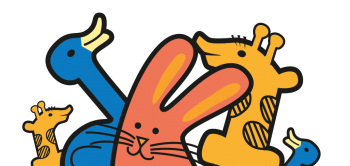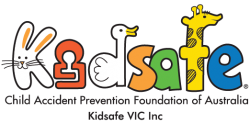FREQUENTLY ASKED QUESTIONS
We receive a lot of questions regarding child car restraints – see if you can find a response below and if not, please contact us directly with your enquiry.

There may be times when a child is too big for the recommended restraint for their age group. If your child has exceeded the maximum size limit of their restraint before the recommended age to graduate them, you should check that there are no other restraints on the market that they can fit in before progressing them to the next stage.
No, you don’t have to – booster seats are designed to be used with an adult lap sash seatbelt.
A child safety harness is an additional piece of equipment that is sold separately to a child restraint. It is not the same as an in-built harness on a child restraint. A child safety harnesses is only required if you need to use a booster seat in a lap only seatbelt position, like the middle seat in the back row of some vehicles. Child safety harnesses are not recommended as they are often used incorrectly. Incorrect use of a child safety harness can cause the lap seatbelt to be positioned across a child’s stomach area, which may cause serious injury or death to a child in a crash.
The Victorian road rules allow children aged 7 years and over to travel in the front seat. However, research shows that the injury risk to children aged 12 and under is nearly double in the front seat compared to the back seat.
Kidsafe recommends that all children aged 12 years and younger sit in the back row of seats where possible.
Just like there is a difference between makes and models of vehicles, there is a difference in the types and sizes of child restraints and booster seats available on the market. Kidsafe Victoria recommends trialling a configuration of restraints in your vehicle if possible to see what makes/models fit best. If you require further assistance or advice on fitting three child restraints across your back seat, Kidsafe recommends visiting your local child restraint fitting station. You can also visit the Child Restraint Evaluation Program website for information and advice.
If there are two restraints in the back seat and there is not enough space to install a third restraint, a child who is the right age and size to travel in a booster seat can sit in a booster seat in the front. Because there are no anchor points in the front seating positions, you will need to use a booster seat that is manufactured without a top tether strap and therefore does not need to be anchored to the vehicle. Ensure that the passenger seat is positioned as far from the front dash as possible, to maximise the distance between the child and the passenger airbag.
Rear facing child restraints cannot be used in the front seating position where there is a passenger airbag.
The Victorian child restraint road rules do not require taxi drivers to provide child restraints or booster seats for customers. However, the road rules do require taxi drivers to ensure there is at least one anchor fitting ready for passengers who wish to supply their own restraint.
The Victorian child restraint road rules require that in taxis:
- Children aged under 1 year do not have to use a child restraint, but they must travel in the back seat.
- Children aged 1 year and over must be seated in their own seating position in a taxi, with their own properly fastened seatbelt if no suitable child restraint or booster seat is available in the taxi.
Kidsafe recommends taking your child’s restraint with you when travelling in a taxi if possible.
Rideshare services like Uber are not exempt from complying with the Victorian child restraint road rules – the same child restraint road rules apply to rideshare services as private cars.
No. All restraints used in Australia must comply with the Australian Standard (AS 1754). Child restraints purchased overseas (including overseas ISOFIX child restraints) do not meet this standard.
A ‘bus’ is defined as a motor vehicle which seats more than 12 adults (including the driver).
If the vehicle has 12 or fewer seats (including the driver’s seat) then any children under 7 years of age must use an appropriate child restraint or booster seat. If a bus has more than 12 seating positions (including the driver’s seat), children are not required to use child restraints or booster seats.
However, it is recommended that children are placed in a child restraint that is appropriate for their size wherever possible.
If a regular child car restraint is not suitable for your child due to their special needs, your first step is to talk to your child’s healthcare professional (e.g. an occupational therapist) about options that may be suitable.
For a comprehensive list of FAQs about ISOFIX compatible child restraints, please visit the Child Restraint Evaluation Program website.
If your vehicle has only one row of seats (e.g. a ute), you can use a child restraint or booster seat in the front seat. The seat needs to have a seat belt to be used with the restraint and an anchorage point to connect the top tether strap to. Type 2 child restraint fitters can install an anchorage point if you don’t have one in your vehicle.
Rear facing child restraints cannot be used in the front seating position where there is a passenger airbag.
Kidsafe Victoria has a variety of child car restraint training available, to find out more click here.
For more information on child restraints and airbags, please view the RACV’s fact sheet here.
We acknowledge the Traditional Owners of country throughout Australia and recognise their continuing connection to land, waters and culture. We pay our respects to their Elders past, present and emerging.
Copyright Kidsafe Victoria© 2022 — Designed by Business Jump Co | PRIVACY POLICY | TERMS & CONDITIONS




